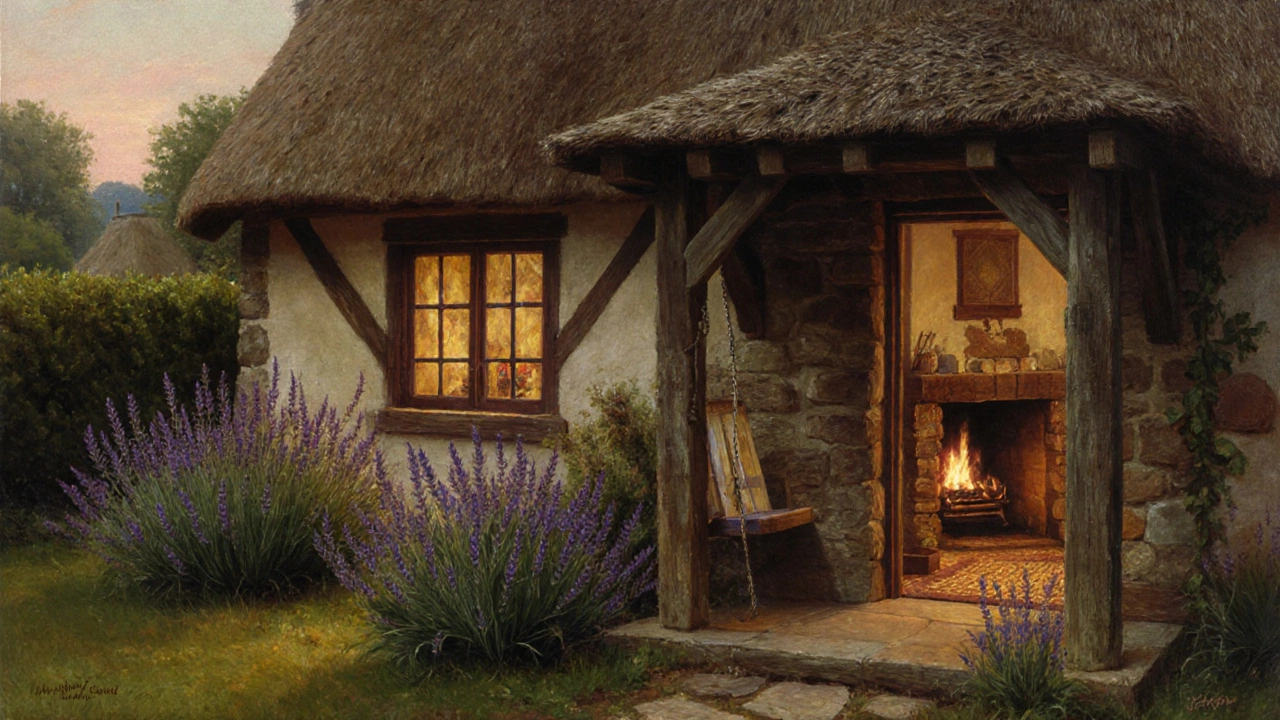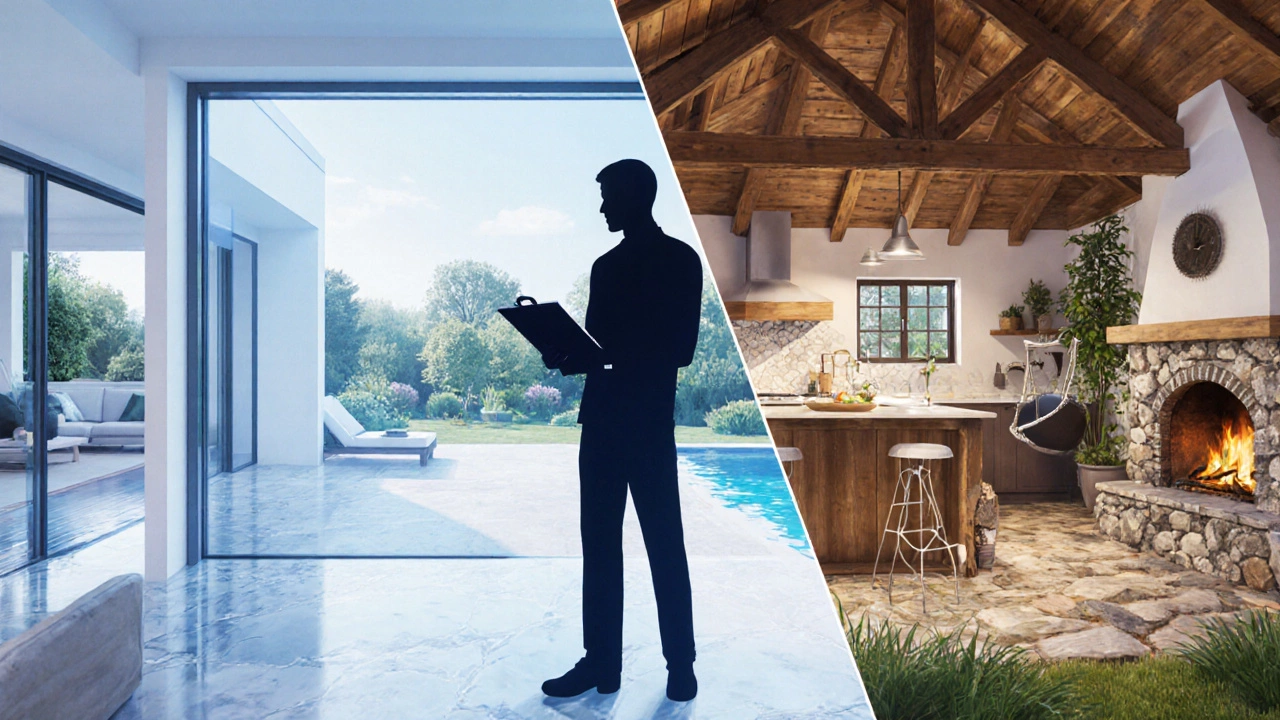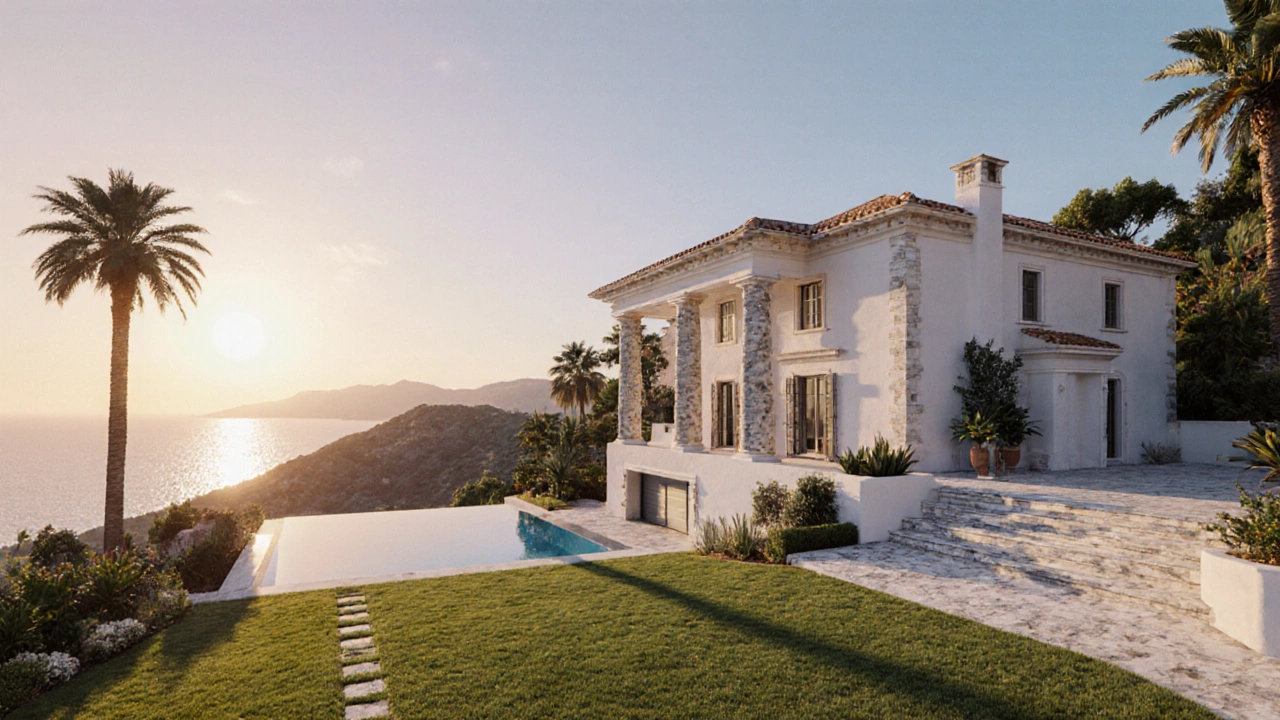Villa vs Cottage Affordability Calculator
Calculate Your Property Budget
When you hear Villa is a luxurious, often detached residence, traditionally found in Mediterranean regions and characterized by spacious interiors, private gardens and a focus on upscale amenities, you picture a grand, sun‑lit property with sprawling lawns. Contrast that with a Cottage is a small, cozy dwelling usually built in rural or semi‑rural settings, often featuring quaint architectural details like a thatched roof or stone walls. The villa vs cottage debate often boils down to size, lifestyle, and budget. Below we break down every major factor so you can decide which fits your next getaway or permanent home.
Definition and Historical Roots
Villas trace back to ancient Roman country homes, designed as retreats for the elite. Over centuries they evolved into the Mediterranean‑style estates we see in Spain, Italy, and Greece today, boasting columns, courtyards, and tiled roofs. Cottages, on the other hand, emerged from medieval European farmhouses. In England, the classic "British cottage" often featured a thatched roof, low ceilings, and a fireplace that doubled as a cooking space. Both types reflect the culture and climate of their origins, shaping the expectations of modern buyers.
Size and Layout
- Villa: Typically 3,000-10,000 sq ft. Multiple floors, open‑plan living, guest suites, and expansive outdoor areas.
- Cottage: Usually under 1,500 sq ft. One‑ or two‑story layouts, intimate rooms, and a direct connection to the garden or yard.
The larger footprint of a villa supports amenities like home gyms, pools, and separate staff quarters. A cottage’s compact design encourages efficient use of space, often with built‑in storage and multi‑functional furniture.
Typical Amenities
Villas frequently include high‑end finishes: marble countertops, gourmet kitchens, climate‑controlled wine cellars, and smart‑home technology. Outdoor amenities might feature infinity pools, landscaped terraces, and private tennis courts. Cottages focus on charm rather than extravagance - think wooden beams, a stone fireplace, a small porch with a swing, and a garden shed. Both can be upgraded, but the baseline expectations differ significantly.
Location and Setting
Villas are often situated in upscale coastal or suburban neighborhoods, close to golf courses, vineyards, or luxury resorts. Their locations command scenic views and easy access to high‑end services. Cottages thrive in rural settings - hillside pastures, forest clearings, or historic villages. They offer seclusion and a direct connection to nature, perfect for weekend retreats or eco‑friendly living.

Ownership and Cost
Because of size and land value, villas usually fall into the premium price bracket. In 2024 European markets, a villa in the French Riviera could start at €2 million, while a comparable property in a less‑touristy region might still exceed €800,000. Cottages are more affordable, often ranging from €150,000 to €500,000 in the UK or Ireland, though historic charm can push prices higher. Maintenance costs follow the same pattern: a villa’s pool and landscaping demand a sizable budget, whereas a cottage’s upkeep centers around roof repairs and heating.
Target Audience
Villas attract families or individuals seeking space for entertaining, multi‑generational living, or a status symbol. They’re also popular among holiday‑rental investors targeting high‑spending tourists. Cottages appeal to couples, retirees, or creative professionals who value intimacy, simplicity, and a slower pace. The "cottagecore" aesthetic has boosted demand among millennials who want a cozy, Instagram‑ready escape.
Choosing the Right Property
- Assess your budget: Include purchase price, taxes, and ongoing maintenance.
- Define your lifestyle: Do you need space for guests and events, or do you prefer a low‑maintenance hideaway?
- Consider location: Proximity to work, schools, or travel hubs may tip the balance.
- Think long‑term: Will the property serve as a primary residence, a vacation home, or an investment?
Write down your priorities, then compare listings against the criteria above. Visiting both types in person can reveal nuances that photos miss - such as natural light, neighborhood vibe, and sound insulation.

Quick Comparison Table
| Attribute | Villa | Cottage |
|---|---|---|
| Typical Size | 3,000-10,000 sq ft | Under 1,500 sq ft |
| Common Materials | Stone, stucco, tiled roofs | Thatched roof, stone, timber framing |
| Price Range (2024 Europe) | €800 k - €5 M+ | €150 k - €500 k |
| Typical Setting | Coastal, suburban, resort areas | Rural, village, countryside |
| Primary Use | Family home, luxury vacation rental | Weekend retreat, primary residence |
| Amenities | Pools, gyms, smart‑home systems | Fireplace, garden porch, modest kitchen |
Common Misconceptions
Many think a villa always means a "holiday home" in a foreign country. In reality, locals own villas as primary residences, especially in Mediterranean towns. Conversely, people assume all cottages are old and drafty. Modern cottage builds often incorporate energy‑efficient insulation, solar panels, and contemporary interiors while retaining the classic aesthetic.
Final Thoughts
Whether you gravitate toward the expansive elegance of a villa or the snug charm of a cottage depends on your financial means, lifestyle goals, and the environment you love. By weighing size, cost, location, and amenities, you can make an informed decision that aligns with both present needs and future plans.
What defines a villa versus a cottage?
A villa is a large, often luxury residence with extensive land and high‑end amenities, typically found in Mediterranean or upscale suburban settings. A cottage is a small, cozy dwelling, usually in rural areas, featuring traditional architectural details and modest facilities.
Which option is more affordable for a first‑time buyer?
Cottages generally have lower purchase prices and maintenance costs, making them a better fit for first‑time buyers or those on a tighter budget. Villas require a larger upfront investment and higher ongoing expenses.
Can a cottage be used as a holiday rental?
Absolutely. Many owners list cottages on short‑stay platforms, especially in scenic countryside or coastal villages, where travelers seek authentic, intimate experiences.
Do villas always have pools?
Most modern villas include a swimming pool or other water feature, but it’s not mandatory. Some urban villas forego pools due to space constraints, opting for rooftop terraces or landscaped gardens instead.
What are the main maintenance challenges for each?
Villas demand upkeep of larger lawns, pools, and possibly complex HVAC or smart‑home systems. Cottages focus on roof integrity (especially thatched roofs), chimney cleaning, and preserving historic elements.
